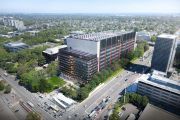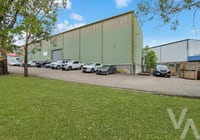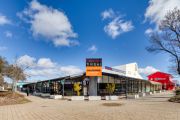
Is this Melbourne’s unluckiest office building?
The Melbourne office market has just received its newest – and possibly unluckiest – CBD tower, with the completion of 130 Little Collins Street two years later than initially scheduled and after two successive contractors collapsed while building the tower with an estimated value of $180 million.
Developer Golden Age’s 28-storey strata office tower also faces lower selling prices for its remaining space. It presold the first 60 per cent of its 9788 square metres for what owner Jeff Xu said in 2021 was an average rate above $18,500 a square metre.
The remaining floors, mostly in the lower section of the tower, would bring the blended rate for the building to about $16,000 a square metre, said Cushman & Wakefield co-head of investment sales Oliver Hay.
The development, on the “Paris End” site of the CBD that Xu bought from the Uniting Church in 2019 for more than $40 million, has borne the brunt of a pandemic that hit office values, and also the failure of two contractors – Probuild in 2022 and Roberts Co earlier this year.
“I wouldn’t call it the unluckiest tower,” Hay told The Australian Financial Review on Sunday.
“He’s had setbacks, but every developer in Melbourne is having setbacks. That is a theme of developing at the moment. Costs are too high, it’s taking too long, banks aren’t easy to deal with.”
Xu – who declined to say how much extra the disruption of losing head contractors and delay beyond the originally scheduled late 2023 completion date had cost him – called it his “most challenging” project, but one of which he was “very” proud.
“The result is a building that redefines the modern workplace – with its boutique scale, rooftop terrace, and luxury end-of-trip facilities, 130 Little Collins achieves a rare balance between work and lifestyle,” Xu said.
“It sets a new benchmark for Melbourne’s CBD, with no detail or expense spared.”
The building was designed by Cox Architecture, Hecker Guthrie, and Jack Merlo.
Tough market
Melbourne, where Labor Premier Jacinta Allan in August said the government would legislate to ensure the right for people to work from home for at least two days a week, remains the capital city with the highest office vacancy rate.
The Property Council of Australia’s latest six-monthly report card shows that net vacancy rate in the CBD was 17.9 per cent in July, barely down from 18 per cent in January.
Sydney CBD, by contrast, had a 13.7 per cent vacancy rate, Brisbane 10.7 per cent and Canberra 10.7 per cent. Adelaide and Perth were closer to Melbourne’s rate, with 15 per cent and 17 per cent, respectively.
130 Little Collins has podium floor plates of 500 square metres and tower plates of 330 square metres. It has column-free floorplates from levels 2 to 27 and ceilings 2.7 metres high.
One advantage the office building – with concierge, parking and rooftop garden – offers is that it is completed. A new building of similar quality couldn’t be completed for less than $25,000 a square metre, Hay said.
“When you look at replacement costs, you couldn’t replace this tower today for that kind of number,” he said.
“Any new project coming to market offering these amenities would need to be in excess of $25,000.”
Tackling big problems
That points to a bigger problem in commercial construction across Australia’s largest cities. The latest readout on the market, based on survey responses of market participants by consultancy Arcadis and the Australian Constructors Association lobby group, finds 44 per cent of people regard the office market as declining and a further 44 per cent say it has stalled.

Cost escalations remain a concern for contractors and similarly to housing development higher-priced projects were more likely to be feasible for developers than lower-priced ones, Arcadis executive director of cost and commercial management Matt Mackey said.
“It’s a little like the residential market,” Mackey said. “If you’re building luxury apartments, you’re going to do OK. It’s the same with premium-grade buildings.”
But while the cause was similar, the problem of feasibility with office projects was very different from housing, he said.
“Nobody’s crying because corporate office workers don’t have an office to go to,” Mackey said. “It doesn’t have the same social drivers.”
New premium office towers would likely draw in employers wanting to give their staff the newest and best facilities, which would increase the pressure on lower-grade towers, he said.
Xu said while Golden Age, which has developed both residential and office assets, remained open to opportunities across all asset classes, it was focusing more on residential now.
“Our immediate focus is on residential townhomes in Brighton and Box Hill South, along with two major mixed-use retail precincts in Box Hill: the established SKY ONE Plaza and the nearly complete SKY SQR, which is now more than 80 per cent leased,” he said.











